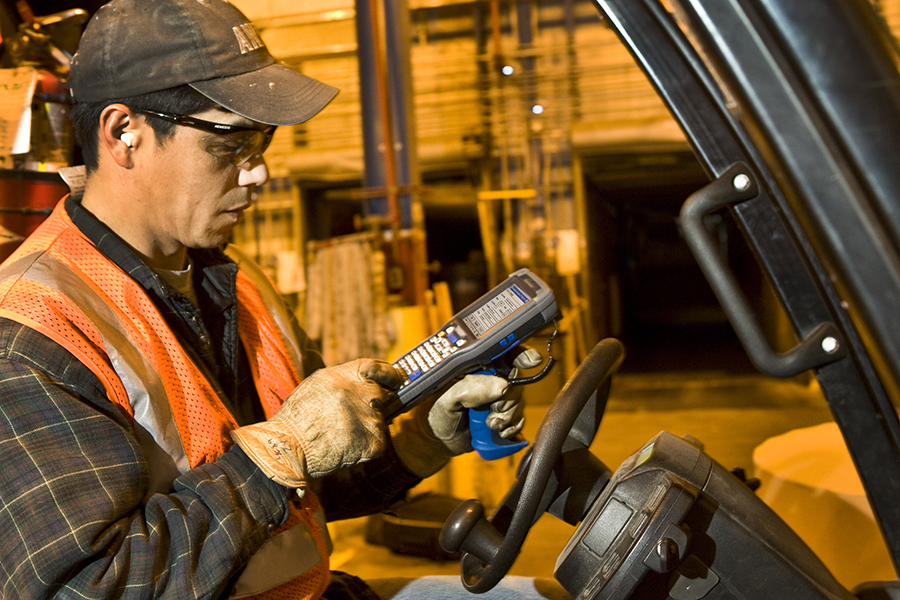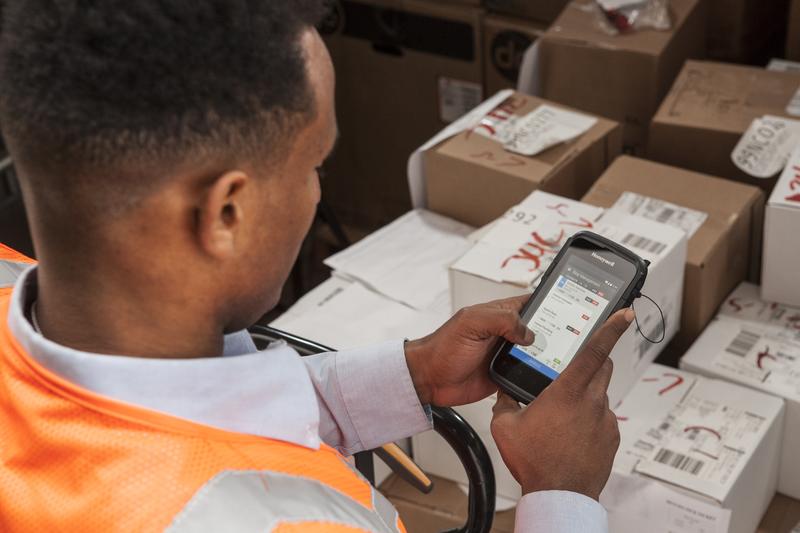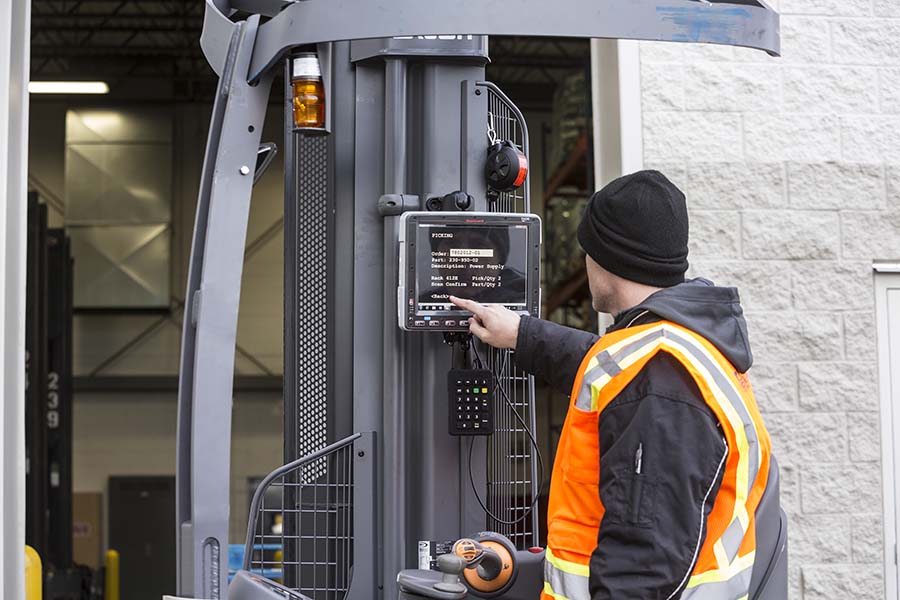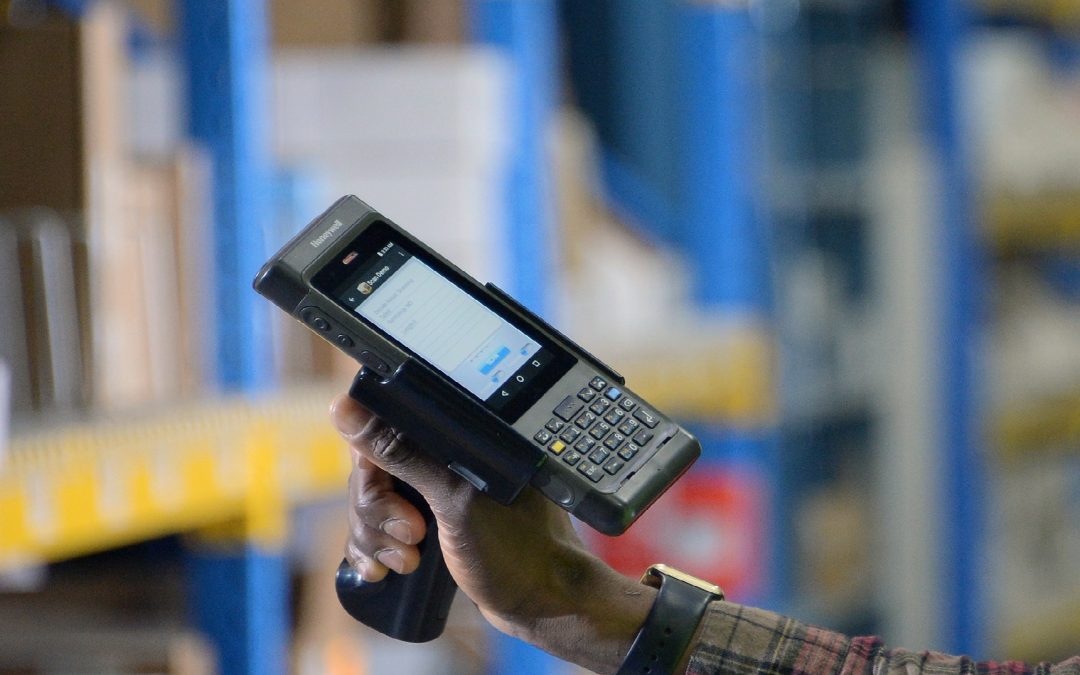
by Chelsea Williams | Dec 2, 2020 | Mobile Computing
Many enterprise workers are provided with mobile devices — such as smartphones and tablets — by their employer to carry out assigned tasks. In recent years, the mobile workforce has grown, with IDC research predicting steady, continued growth through 2024. At the end of the forecast period, IDC expects mobile workers will account for nearly 60% of the total U.S. workforce.
How well your mobile workforce performs depends on the quality of the technology it uses. Older technology simply won’t get you the same performance as new technology in areas such as device uptime, efficiency, productivity, and more. However, keeping up with the latest technology in a world where it advances so quickly can be costly to enterprises.
To arm the growing mobile workforce, enterprises must be careful about procuring new devices while minimizing strains to budgets. One way to achieve this is through trade-in programs. Much like consumers trading in their phones, enterprises can overhaul their fleets of mobile devices for rebates and savings on new equipment.
Keep reading to learn why an enterprise mobility trade-in program may be right for you:
The Value of Enterprise Device Trade-Ins
New devices aren’t cheap — that’s why many enterprises are turning to trade-in programs to acquire new technology without breaking the bank. Luckily, trade-in programs are a model where everyone wins. Enterprises get new devices in exchange for their old ones, while OEMs get hidden value through repurposing the technology. Further, trade-in programs are a win for the environment as they keep devices from being discarded before their useful end of life; OEMs will recycle devices that have been traded in or dispose of them safely for free.
However, the enterprises are the biggest winner; receiving technology and getting rid of older technology simultaneously while saving money through rebates can’t be beaten. Further, the tech upgrade can simplify workflows, endure harsh mobile environments, and be easily managed via mobile device management (MDM)programs.
Security Can’t Be Overlooked in Trade-Ins
Security is of the utmost importance for every enterprise. Historically, trade-ins have been viewed as a risky business because they posed security threats. Many enterprises were worried their data from their old mobile device would be accessible by the next user. However, trade-in programs have evolved and no longer pose the same security threats. In fact, they’re more secure than ever.
A well-managed enterprise trade-in program affords economic benefits along with the comfort of data security while keeping their mobile workforce productive with the latest devices and applications. Valuable, sensitive data is stored on mobile devices and must be transferred/removed from old devices before trade-in. Going above and beyond a factory reset, SIM and memory cards should be removed and destroyed. Further, your trade-in partner will have software capabilities to quickly and efficiently remove all data from devices. Once all data is removed, quality controls and audits are performed to ensure the device is ready for its next use, and none of your data will carry over to the new device owner.
A fundamental requirement for any organization involved with trade-in business is to retain their Responsible Recycling (R2) certification. If devices are data-cleared, but are too old or broken for resale, they will be recycled for their materials, guaranteeing green disposal. Every step of the process requires an auditable electronic certificate to be retained to ensure fidelity of the process.
What to Look for in an Enterprise Mobility Trade-In Partner
It is wise to choose a trade-in program with a tie-in to an organization with enterprise mobility management (EMM) or MDM capabilities. Without these services to manage all of your mobile devices, confidential data stored on your devices may be at risk. If a mobile device is lost or stolen, MDM or EMM can remotely lock and wipe all data to avoid a data breach. With a trade-in program with these capabilities, you can retain more control over your devices and data.
The most value is found in finding a trade-in partner and carrier that makes the process of unloading old devices and procuring new ones as easy and seamless as possible for your enterprise. Make sure the trade-in program allows you to trade in devices from any brand. An ideal program will accept a wide variety of products, such as mobile computers, printers, tablets, and more.
A workforce is only as good as the technology they use, and as the mobile workforce continues to grow, enterprises need to equip their workers with up-to-date technology. It’s time that enterprises leverage mobile device trade-in programs to update their tech and optimize their old tech value. While saving money and securing their data, this win-win partnership will ensure that enterprises receive new devices and that OEMs receive hidden value through repurposing old ones. An ideal partner should accept a wide variety of products and provide you with mobile device management capabilities. If your partner doesn’t make the entire overhaul as easy as possible, they’re not right for you.
Don’t waste any more time and money overhauling your entire fleet of devices by yourself. If you’re interested in learning more about how you can modernize your workforce’s devices without breaking the bank, contact Informs, Inc. for all things related to mobility trade-in programs.

by Chelsea Williams | Aug 6, 2020 | Mobile Computing, Warehousing
For years, healthcare environments have been relying on specially designed devices made to help mitigate the risk of infection. Now the risk has transformed, and the most dangerous places that viruses could be lurking aren’t just found in hospitals. They can now be found in retail stores, warehouses, and any other place where people congregate for any amount of time.
Distribution centers and supply chain manufacturers must ramp up safety efforts by taking a page from the healthcare industry and implementing tools, policies and devices designed to reduce the spread of pathogens. Consider these tips when selecting (and keeping clean) the right mobile devices for your operation:
1. Consider Devices Made from Disinfectant-Ready Plastics
Some devices are made with special plastics that are designed to withstand strong cleaners and multiple cleanings without cracking or corroding. Make sure your tech stack includes the most rugged and disinfectant-ready devices for your applications. This will help extend the lifecycle of the device as well as keep reduce the spread of germs. Pay strict attention to the suggested cleaning and care instructions from the device manufacturer and implement a protocol that ensures all employees are cleaning devices according to best practices and at recommended intervals throughout the day.
2. Implement Anti-Microbial Products
There are devices on the market with anti-microbial properties. This essentially means that these products have silver-ion embedded right into the plastic on the device. Because silver impedes the growth of deadly organisms, it can reduce the risk of spreading infection from person to person via the device.
This additive has become increasingly popular, especially recently. You can find everything from screen protectors, to tablets, to mobile computers with silver ion embedded in the surface, so that your workers can effectively do their jobs while lowering the risk of germs spread.
3. Leverage UV Light Solutions
When UV light is used as a sanitizing solution, it can eliminate 99.9% of all germs. UV light solutions allow your operation to place smaller mobile devices, like Honeywell’s Dolphin CT60, inside a compartment that once shut, activates UV light to disinfect the device within minutes.
This solution is not only incredibly effective, but it also does all the sanitization work for the user. Employees get the peace of mind that the devices they are using are fully cleaned and sanitized 100% of the time, without having to clean the devices themselves.
4. Develop Cleaning and Disinfecting Guidelines
When it comes to cleaning and disinfecting your devices, it’s important that you develop a regular cleaning schedule and follow the recommended best practices for ensuring your devices are properly sanitized.
A standard microfiber cloth is ideal for wiping away fingerprints, surface grime, and smudges from your devices. Pathogens can live in the oil in these smudges and fingerprints, so cleaning them with a microfiber cloth can help reduce the transmission of germs, but it does not eliminate all bacteria or completely sanitize devices.
To completely disinfect your devices, you will need to consult the manufacturing guidelines for each individual device. Develop a regular disinfecting schedule and communicate instructions to your employees for when and how a device should be properly cleaned. Make this information available at the device’s charging station, and include instructions for both wiping down devices and thoroughly sanitizing them, as well as how often you should carry out each.
5. Promote Best Practices for Good Hygiene
Above all else, each employee must practice good personal hygiene to ensure everyone stays safe. Provide each worker with personal protective equipment, such as masks and gloves. It’s also important that they maintain a safe distance of at least six feet between employees.
Make sure your workers know the proper sanitary guidelines to follow. Everyone should be covering their mouths and noses whenever they cough or sneeze and h and washing should be carried out often. Scrub with soap and warm water for at least 20 seconds, and dry hands thoroughly with a disposable towel. If soap and water aren’t readily available, hand sanitizer can be substituted. Make sure you use a 60% alcohol-based hand sanitizer in between hand washings.
These best practices have been followed in healthcare environments for decades. Now that everyone, not just healthcare workers, needs to keep safety top-of-mind, we can all take a page out of the healthcare industry’s handbook and implement these same best practices for industrial environments.
Informs provides best-in-class solutions that can be easily cleaned and disinfected to help you mitigate the risk of virus spread and protect your workers. For more information, contact an expert at Informs today.

by Chelsea Williams | Jul 27, 2020 | Mobile Computing
The industry is under more pressure than ever to increase productivity and speed up processes. Now that consumers expect fast shipping on every purchase, the pressure is on to optimize your supply chain processes as much as possible.
Keeping up with the demand requires mobility. The right mobile devices and equipment can help position your operation for optimal productivity; however, acquiring these mobile tools can be costly and complicated. Scanners, mobile printers, and mobile computers are big-ticket items that carry a big-ticket price tag.
With how rapidly technology is changing, it is time for a new, innovative approach to acquiring your necessary equipment and services—and one that decreases the risk of high up-front investments.
1. Move to a Subscription Payment Model
In the current ultra-competitive environment, it’s wise to consider moving to a subscription payment model. This allows you to upgrade your enterprise mobility and achieve greater productivity without high upfront capital costs.
With a subscription payment model, you can pay a predictable monthly subscription price, and receive a complete solution with all equipment and related expenses bundled under a single contract.
Subscription models provide you with the greatest flexibility at the least risk, while decreasing the total-cost-of-ownership to your organization. You can eliminate unnecessary expenses throughout the lifetime of the device, including product disposal. Honeywell even offers Honeywell-as-a-Service (HaaS) to help your operation acquire the assets you need at a cost that you can easily manage.
2. Discover Managed Services
Once you have all of your necessary devices, it’s essential that you can effectively manage and service them. Unfortunately, when it comes to enterprise mobility, managing, supporting, and servicing your assets can be complicated and time consuming. While proper management is critical for keeping your equipment in optimal condition, it’s challenging to do alone.
A managed services provider can take all of this off your plate, helping you ensure your devices and equipment offer maximum performance, security and up-time. Professional services can be bundled into one affordable monthly cost, often along with a hardware-as-a-service contract. This allows for:
- Technology consulting
- Solution engineering
- Product procurement
- Device configuration, stating, and kitting
- Software integration
- Mobile device management
- Helpdesk support
- Spare pool management
- Repair services
3. Explore Trade-in Programs
When your device becomes obsolete or reaches its end-of-life, disposing of it can be a hassle. Other times, your device is still working, but it doesn’t add as much value or work as effectively as newer devices, but you’ve invested in it and don’t want to lose out on a good return.
In instances like these, many warehouse operators turn to manufacturers like Honeywell, which offer trade-in programs. These programs can ensure that your devices are disposed of properly. You can trade-in your old equipment and then get discounts on newer devices. Trade-in values typically range from $100 to $500 per device. While that may not always cover the costs of upgrading your devices, you can benefit from your old devices while increasing productivity with the new devices once you’ve upgraded.
4. Make the Most of Your Accessories
Upgrading your devices can include extra costs that you may not have considered. In some cases, you may have to purchase all new accessories, which can be quite costly.
Luckily, many manufacturers like Honeywell will design their devices to be backward compatible. This means that new models will be compatible with the accessories of older models you may even already own, effectively helping offset the cost of acquiring and upgrading devices. Backward-compatible accessories can include cradles, charging docks, batteries, and more. This can offer significant savings, sometimes up to 20% or more.
Acquiring new devices for enterprise mobility can be costly. However, it’s possible to reduce the acquisition costs when you work with manufacturers like Honeywell and implementation partners like Informs. Together, we help make it easier and more cost-effective for your operation to boost mobility and increase productivity in the warehouse by offering a wide array of services and payment options. For more information on how to reduce your acquisition costs while still achieving a positive ROI, contact the experts at Informs, Inc.

by Chelsea Williams | Sep 17, 2019 | Mobile Computing
In the supply chain, you often still rely on your older legacy applications long after the original terminal has become obsolete. Without terminal emulation software, accessing these backend systems required bogging down your IT department writing code that would allow newer devices to run this old software. This required a lot of man hours and was inefficient.
Now, with modern terminal emulation software, you can easily interface with older terminals and work with legacy applications without the need for any new code or programming. The benefits of terminal emulation software extend to mobile workers throughout deployment.
Download our product catalog to learn more about what about what Informs has to offer your business.
Speed and Reliability
For mobile devices used in the supply chain, terminal emulation keeps your workers connected and productive. They can access the legacy software systems they need on the go, while still staying connected on mobile devices. Newer software bridges the gap between older key-centric interfaces and newer touch-centric ones.
Instead of navigating through green screens, the right terminal emulation software will allow these devices to be more user-friendly and mimic touchscreen interfaces that workers are already familiar with. This transforms applications to be much more intuitive, which allows workers to perform tasks more efficiently.
Security
Leading terminal emulation software can mitigate the risk of viruses through enhanced, secure communications. Before, losing connection with the host application could result in lost terminal emulation sessions, but with wireless session persistence, you can preserve data and productivity should the connection be disrupted.
Additionally, it allows workers to stay in one browser, rather than switching back and forth between multiple browsers, which further reduces the risk of viruses and provides secure communication between devices.
Customization
The latest terminal emulation software, like that offered by Informs, Inc. allows you to customize your software to your specific business processes. We do this by adjusting key mapping so that certain numbers or commands on the keypad perform specific actions.
We can also customize the device environment to avoid pitfalls, like programs shutting down without saving, or accidentally exiting out of something that needs to run continuously all shift.
Service and Support
If you are looking for terminal emulation software for your enterprise, make sure you consider how you will maintain your technology. Look for tools that help your team quickly troubleshoot problems, like centralized software management or remote management.
Many terminal emulation apps come ready to go right out of the box. Others may need to be installed. Your provider should offer service and support, as well as insight on which terminal emulation apps are right for your operation. Make sure they have a team of industry experts available to help quickly identify and solve problems when you need extra assistance.
OS Migration
Now that support for Windows Embedded devices is coming to an end, enterprises are looking at how they will handle the upcoming migration to Android devices when their existing software is configured for Windows. Luckily, Informs offers advanced terminal emulation software that makes it easy for you to navigate the transition and continue using your software on newer future-proof Android devices. This software is compatible with all Informs devices and can be preloaded when you purchase your new device. We recommend checking out Honeywell’s Mobility Edge platform. It includes rugged, scalable devices supported through Android, and offers a repeatable and extensible approach for deploying and managing mobile solutions across your enterprises, with less risk and less cost.
Not only will this move get you where you need to be, it will allow you to tap into faster speeds, an improved user experience, heighten control over security upgrades and position you to take advantage of benefits from the IoT.
For more information on terminal emulation, the transition to Android, and how our software can help your operation, contact the experts at Informs, Inc. today.

by Chelsea Williams | Jun 26, 2019 | Mobile Computing, Uncategorized, Warehousing
Windows had announced it is ending support for its Windows-embedded devices. This has caused manufacturing and warehouse operators to go on a frantic search for a new operating system (OS) for their enterprise mobile devices before the end-of-life goes into effect.
While transitioning to Android devices may seem overwhelming and complex, manufacturers such as Honeywell offer business solutions to take control and unify the process, effectively simplifying the transition. Honeywell built a mobile device platform to help navigate this transition: Mobility Edge.
Filled with cutting-edge solutions, download our complete product catalog here.
Here are just a few of the reasons why you should consider enterprise mobile devices built on the Mobility Edge platform:
A Unified Mobile Device Platform
The Honeywell Mobility Edge provides a unified hardware and software platform for all form factors, which allows for rapid deployments and great performance. Designed for Android, it is composed of common hardware, a common OS with support for multiple generations of Android, and a common software ecosystem that includes Honeywell software, as well as Honeywell-approved independent software vendors (ISVs).
Overall, this unified platform enables enterprises to streamline deployment and management for enterprise mobile devices, which improves efficiency and reduces cost, effort, and risk. It also helps to reduce the demands placed on the IT department.
Extended Lifecycle Means Less IT Frustration
Android enterprise devices, especially those built on the Mobility Edge platform from Honeywell, are renowned for their long lifecycles. In fact, enterprises can get six full years of life through 2025 when they invest in a Mobility Edge device from Honeywell. Not only that, but they can receive security support through the next five versions of Android.
The Mobility Edge platform also includes other features that extend the lifespan of enterprise mobile devices and provide a maximum return. The battery optimizer provides information about current charge and battery health. Users can choose different optimization profiles that can work to extend the available runtime of the battery pack. A self-diagnostics feature also allows users to identify and diagnose basic device issues, reducing the demand on IT.
Minimized Security Risks
An unmanaged device poses a security risk, which can be devastating to enterprises. When devices aren’t updated regularly and necessary security patches aren’t installed, cyber criminals have an opportunity to act, with some serious consequences. IBM reported the average cost of a security breach is up 6.4% to $3.86 million.
Honeywell provides regular security patches for Mobility Edge devices at least every 90 days—sometimes as frequently as every 30 days. This helps ensure that all devices on the Mobility Edge platform are secure, and data is protected.
Take Advantage of Honeywell’s Mobility Edge Platform
Honeywell is launching new enterprise mobile devices with the platform already installed. As the only company that guarantees support through Android R, Honeywell’s Android enterprise devices are future-proof and built to last.
- Dolphin CN80—an ultra-rugged device that features both a keypad and a large touchscreen interface for speedy and efficient data entry.
- Dolphin CT60—a durable and versatile mobile computer with a long-lasting battery and high-performance scanning.
- Dolphin CT40—a full-touch mobile computer with a five-inch display that acts as an intuitive tool, optimized for long shifts and comfortable use.
- Dolphin CK65—a rugged mobile computer with flexible data entry options and enhanced scanning read ranges of up to 15.2m (50 ft.).
- Thor VM1A—a leading vehicle-mounted computer that has been upgraded to the Mobility Edge platform, and can be used on multiple vehicles.
Interested in learning more about the enterprise mobile devices built on the Mobility Edge platform and how they can help you navigate the transition from Windows to Android? Contact Informs, Inc. today.

by Chelsea Williams | May 14, 2019 | Mobile Computing
Enterprises everywhere are thinking about how they will navigate the upcoming OS migration. Support is coming to an end Jan 13th 2020 on Windows embedded devices, so it’s time to start planning how you will migrate to other operating systems and which mobile computers to choose.
Are you ready? End of life for Windows Embedded OS.
Dates to be aware of:
- June 10, 2018 – Windows Embedded CE 6.0 will be End of Life
- June 9th, 2019 – Windows Embedded 8.1 Handheld will be End of Life
- January 14th, 2020 – Windows Embedded Handheld 6.5 will be End of Life
Here is how to get started:
Choose a Provider
A service provider is an incredibly important piece of the Enterprise technology puzzle. The right service provider will be instrumental in helping you achieve easier, faster deployments and get the most out of your investment.
Look for someone that can do more than provide you with just the hardware you need. Your provider should be an industry expert that understands both the technology and your industry, so they can guide you on what solutions will best address your needs.
Your provider should recommend a long-term, future-proof solution—otherwise you will have wasted time and resources investing in a solution that will soon be obsolete.
Hardware and advice aren’t the only things that providers offer, however. A good provider will have a range of valuable services that make for smart business investments, like mobile device management, and onsite repair. These added services are great for helping to protect your investment.
Choose an Operating System
Once you are confident that you have the right provider, have them or your IT department assess the state of your operation’s readiness for migration. Are your devices working and capable of migrating to the new OS, or do you need to purchase devices? How many devices will you need to upgrade? And what OS will offer the highest performance?
Hardware manufacturers are beginning to point to Android OS as the dominant OS for enterprises using mobile computers. Rugged device manufacturers like Honeywell have begun tailoring their devices to Android, and three of Honeywell’s rugged devices, which run on the Mobility Edge platform, have been validated as Android Enterprise Recommended. This program makes it easier for organizations to select, deploy, and manage enterprise devices and services.
Choose a Device
Rely on your provider to help you with selecting the devices that are best suited for your application and your needs. They will likely point you towards a rugged device manufacturer like Honeywell, who is forward-thinking in their product design. Some of the devices Honeywell offers are:
Dolphin CT60 mobile computer—a rugged touchscreen device with an extended battery life. This device offers high-performance scanning and protection against dust and moisture.
Dolphin CN80 mobile computer—an ultra-rugged device built to withstand the rigors of harsh environments. The CN80 features both a traditional keypad and a large touchscreen interface for quick, efficient data entry options.
What’s Your Plan?
Have you struggled to nail down a solid OS migration plan? Even though this transition can be complicated and intimidating, you need not worry. Our team at Informs, Inc. can help you find the right strategy and device for the transition from Windows to Android.







Recent Comments